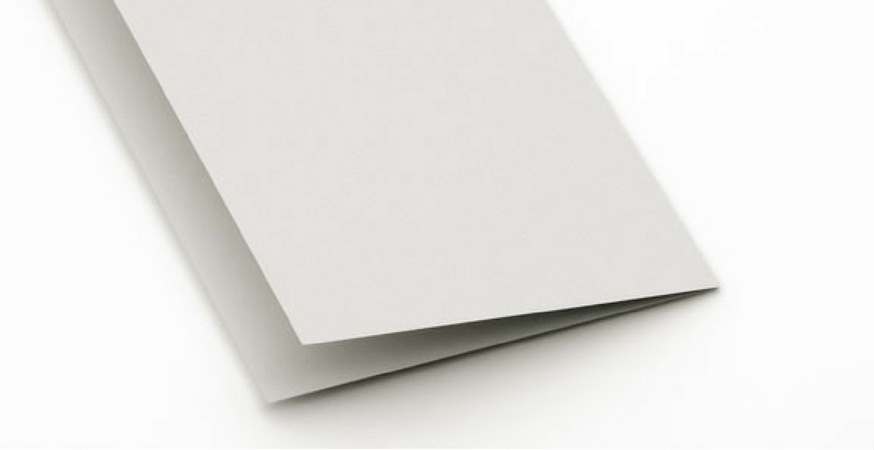Folding paper can be the bane of both printers and designers. Nothing is more aggravating than seeing a beautiful design project brought to its knees by a lousy fold…cracking its way deep into the fleshy folds of your psyche…ouch. In the next few paragraphs, I’m going to share some simple and very useful information about the proper folding and scoring of paper, to help you successfully complete your projects as planned.
During my 20 plus years of selling paper, I’ve seen many proper folds and some bad, not just poor but downright bad, folds within paper projects. With a few exceptions, I’ve never met a lousy fold that couldn’t have been prevented. Not corrected after the fact, but prevented on the front-end of a project by proper planning and a reasonable understanding of the properties of paper and the mechanics of proper paper folding.
The source of poor folds is rarely poor paper quality. Poor folds are usually the result of poor planning. The rules for a good clean fold are simple, but time and again, folks try to cut corners and go against the grain. Yep, that’s problem number one — folding against the grain direction of the paper versus folding with, or parallel to, the paper’s grain direction.
The Long & Short of It…
All machine-made paper has a grain direction. While on the paper machine, most paper fibers will line up in the direction the paper is traveling along the machine. This is called “machine direction” or “parallel grain direction.” Each sheet has two grain directions — machine direction and cross-machine direction. You have to understand grain direction to properly plan your jobs and to subsequently properly fold paper.
Planning ahead and buying the proper sheet size to get the most efficient number of pieces from a sheet, while taking grain direction and parallel fold direction into account, will save you many headaches, botched jobs and, yes, money! You will not save money by buying a sheet size strictly to get the most pieces out and disregarding the grain direction and folds. Trashed or rejected jobs are very expensive.
Know the Score…
Now that you know about grain direction and the need for proper planning, you are ready to approach the fold with confidence. Folding is best executed with a score line pressed into the sheet, which creates a hinge for a nice clean fold.
Your Success Hinges on…
As I said, for a nice clean fold, your success hinges upon creating a proper score line hinge. Much like a door requires a proper hinge to swing freely, creating a hinge in your paper allows the paper fibers to move freely without cracking and bending in unsightly directions. And just like a door, each hinge has a proper direction. Just like you would not try to push a door open in the opposite direction of its hinge, you would not fold paper against the direction of its hinge.
You need to know which way your paper hinge is designed to function. However, with paper, the proper hinge swing direction can be subtler than your average door. Take a look at the illustration below which should make your understanding of how to properly fold scored paper very clear. Which way to fold on the score line hinge is simple once you know how it works.



